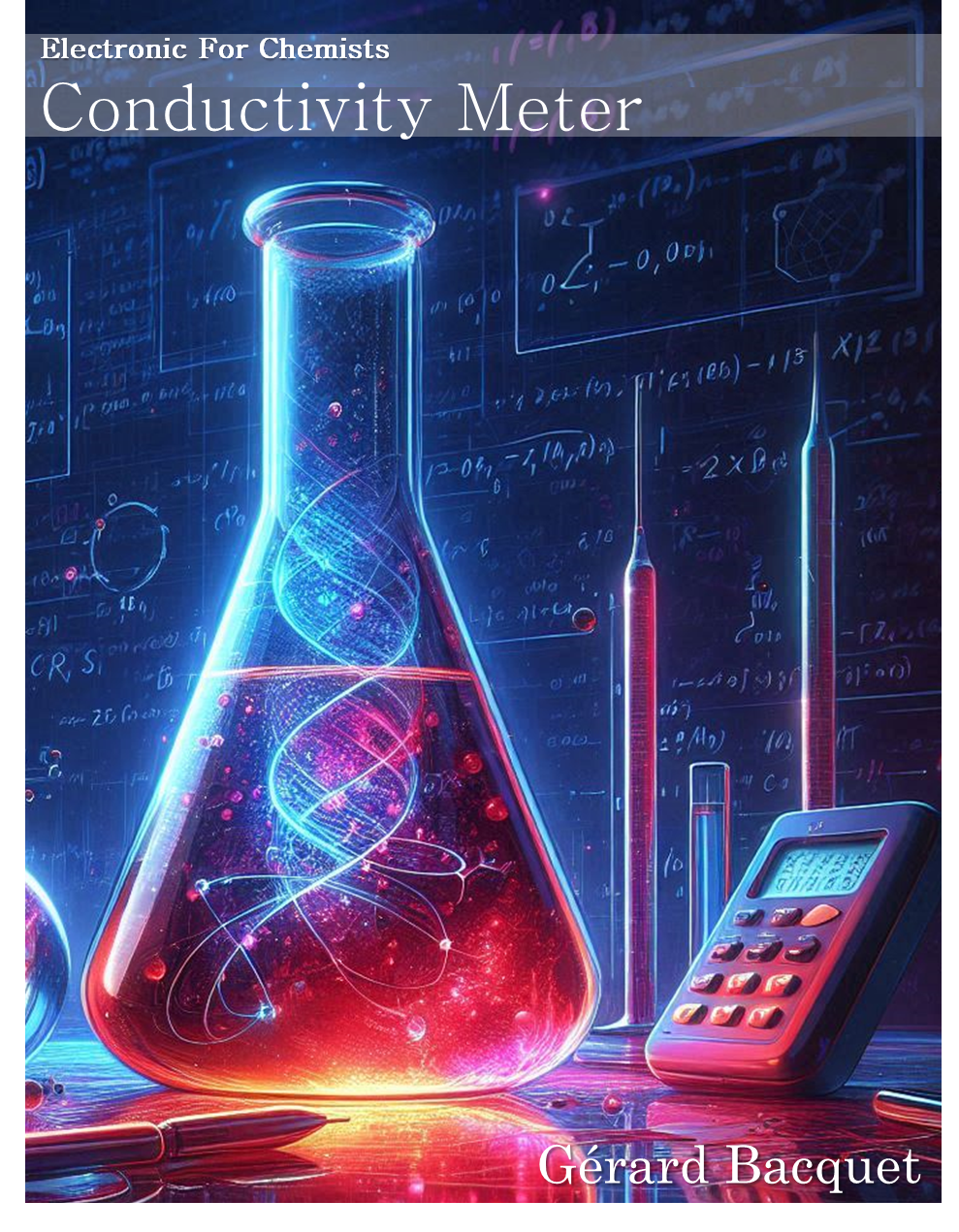
Electronic for Chemists -The conductivity meter
This book is the first in a series of publications on the application of electronics and robotics to the manufacture of equipment for chemistry. It logically follows the previous 5 books on "Electronics for Chemists", which aim to introduce chemists and physicists to the design of laboratory equipment to create an autonomous and low-cost "ChemLab".
For chemists, conductivity represents a fundamental parameter in general chemistry and the study of aqueous solutions in particular. For electricians, a conductivity meter is a device that is designed to measure resistance. This is achieved by measuring the intensity of the current passing through the solution when the electrodes are subjected to a voltage, and by applying Ohm's law (U = R.I). This book therefore provides knowledge of the chemistry of conductimetry, explanations of the associated electronics, the components necessary to build a conductimeter, the circuits and programming codes, and also the 3D-printed accessories (probe) to have a complete and autonomous conductimeter.
This book then looks at measuring resistance with an alternating current and the effect of the frequency of the signal on the measurement. It also covers the use of astables, oscillator circuits and rectifiers to measure resistance in a complex system. The final measurement can be analogue, using a voltmeter, or digital, using a DAQ board. This book therefore deals with 4 different analogue voltmeters, depending on the oscillators and rectifiers used, and 2 different digital voltmeters with an Arduino card. From a pedagogical point of view, the book covers the basics of conductivity in chemistry, the effect of signal frequency on conductivity measurement, the robe design, the basics of astables, rectifiers, amplifying alternative signals, managing the clock and C++ language of an Arduino card.
Let's not forget that we cannot expect a chemist to become an expert in electronics and data processing ... However, we can educate him or her in the simple and basic principles. We invite chemists to participate in the open source movements to enrich himself and the community of "hackers" and "doers". In this sense, this book has been written in the hope that readers will fill in the missing pages!

